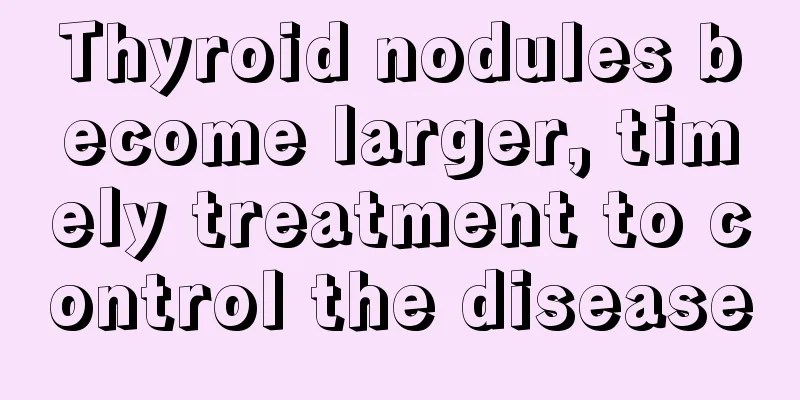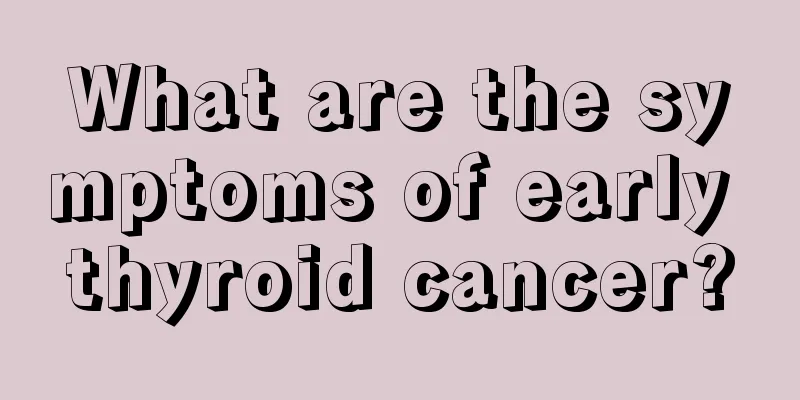Thyroid nodules become larger, timely treatment to control the disease

|
When thyroid nodules become larger, a series of complications will occur, such as compression of the trachea and difficulty breathing. If they compress the esophagus, symptoms of swallowing discomfort will occur. Timely treatment is required. Generally, the treatment of thyroid nodules takes some time. 1. Thyroid hormone suppression therapy Short-term treatment is ineffective and should be continued for at least half a year. Premenopausal women and men can use higher doses (to suppress TSH to below 0.1mU/L) for suppression treatment for more than one year. If the nodule shrinks, the dosage of thyroxine can be reduced and taken long-term to maintain TSH at the lower normal limit. If the nodule enlarges, treatment will be stopped and surgery or re-puncture evaluation can be performed directly; if the nodule does not change, treatment will also be stopped and only follow-up observation will be performed. Postmenopausal women should pay attention to the adverse effects of thyroid hormone on bone metabolism. A short-term follow-up (6 to 12 months) should be conducted first. If the nodule does not change or shrinks, follow-up alone is sufficient and thyroid hormone suppression therapy is not necessary. If the nodule enlarges after follow-up, suppression therapy should be given again. Generally, the initial dose should be small enough to suppress TSH to a level below normal but measurable (0.1 to 0.5 mU/L). After one year of treatment, the medication was discontinued for observation. For those whose nodules enlarge after stopping the medication, thyroid hormone treatment can be resumed to suppress TSH to the lower limit of normal, and the medication can be taken for a long time. If the nodules remain unchanged or shrink, only regular follow-up is required. If nodules enlarge during suppressive therapy, direct surgery or re-puncture evaluation is required. 2. Sclerotherapy For diagnosis of benign nodules. In particular, this method can be used to treat autonomous functional thyroid nodules or adenomas, parathyroid adenomas, etc. Under ultrasound guidance, 1 to 4 ml of anhydrous ethanol is injected into the center of the nodule. The injection can be repeated until the nodule disappears. 3. Radiation therapy Autonomous functional/hyperfunctional thyroid nodules or adenomas can be treated because of their ability to concentrate iodine. |
<<: How to treat congenital scoliosis, choose the method according to the situation
>>: Why is there pain in the knee? There are three reasons.
Recommend
What is the best way to reduce scars?
The presence of scars actually has a great impact...
What is the best way to treat brain glioma?
After the occurrence of brain glioma, many people...
Is ALT 73 serious?
Alanine aminotransferase is mainly present in the...
What fruits are good for stomach cancer?
Under the current circumstances, patients with ga...
What are the signs of termites appearing in the house
The presence of termites in the home is a very tr...
Early symptoms of esophageal cancer in women
Early symptoms of esophageal cancer in women: 1. ...
What should you eat to prevent lung cancer? Introducing the most basic high-risk factors for lung cancer
Nowadays, more and more people are suffering from...
Who can't take vitamin b2
Vitamins are indispensable to each of our bodies....
How to exercise after chemotherapy for breast cancer
Chemotherapy is one of the main methods for treat...
The harm of snail rice noodle
We eat a lot of things every day, and these thing...
Why have I been sweating since I was a kid?
Some people have been sweating since childhood. T...
If you don't have a fever for five years, be alert to two types of cancer
Many people mistakenly believe that not having a ...
What are the benefits of drinking water boiled from jujube roots?
Speaking of sour jujube, everyone should be famil...
What are the harms of sleeping too much?
In today's society, many people have problems...
What should I eat if my wound is festering?
It is inevitable to bump into things in daily lif...









